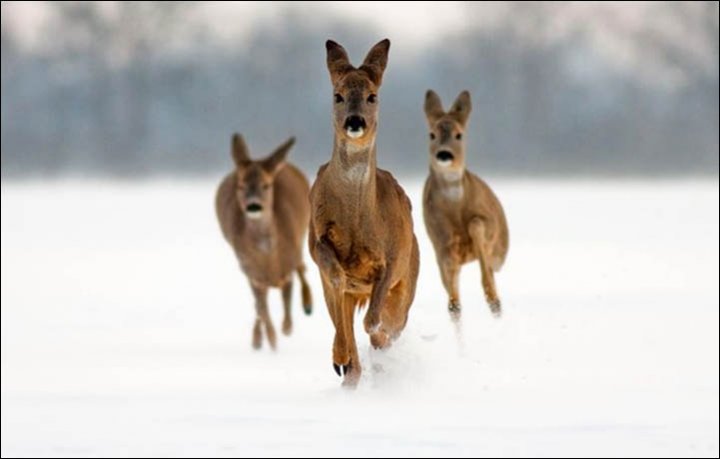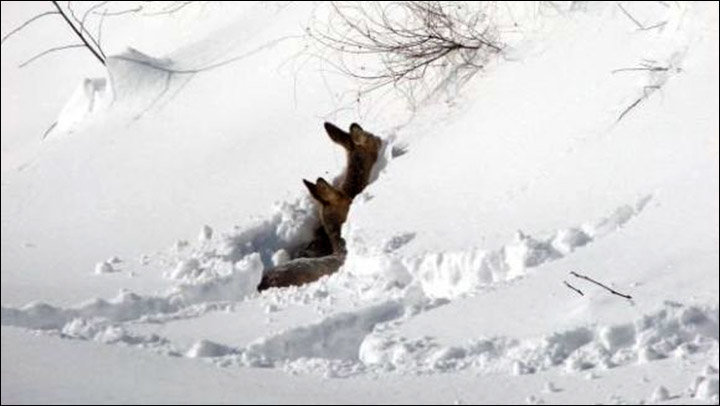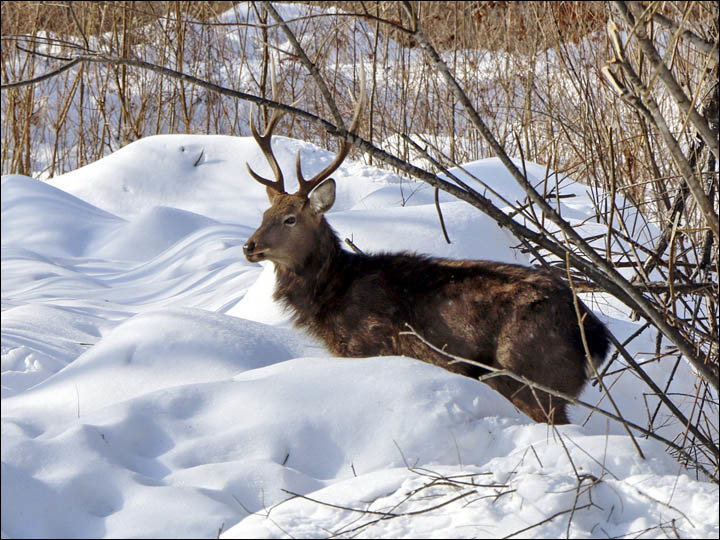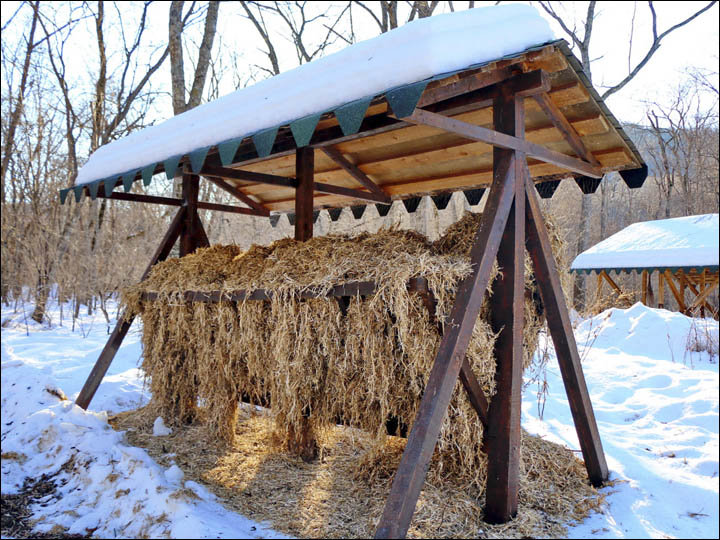High snow drifts in the Altai Mountains and further east in Russia are causing huge problems this winter for herbivores - roes, deer and boars. Even larger animals as moose - elk - are finding it hard to cope with the deep snow.
Boar that are not full grown are dying in snowdrifts if there are no adults to break through the trails. The biggest threat is to roe deer, say wildlife experts.
Special feeding sites have been set up to allow them to find food. The last winter in Altai with similar heavy snow falls was in 2001-2002, when the number of roe deer was reduced from 27,000 to 17,000.

It took a decade to restore the population. At the beginning of 2016, an estimated 25,000 roe deer were in the region, but there is a threat of a new wipe out.
In the Russian Far East, heavy snow falls and a poor acorn crop is jeopardising the animals.
The director of Land of the Leopards national park Tatyana Baranovskaya, said: 'Winter promises to be a stern test for ungulates. Several heavy snowfalls which hit Primorye region made it difficult for them to travel and search for food.' The snow is too deep for them to forage, she said.
'Before the creation of the national park on these lands there were cases of the mass death of ungulates...
'Due to annual feeding we have been able to maintain a stable population of these animals, which is especially important given the growth of the Amur leopard population.'
The deer are a crucial source of food to Siberian leopards, the most 'at risk' big cat species in the world. Food is laid out by national park staff in special forage areas - animal eateries that will help the wild animals to survive the winter.
Rolls of straw and bags of grain are provided. Hundreds of deer, roe deer, wild boar come to eat.
Some 450 rolls of soybean straw, 100 tons of oats, and 50 tons of corn has been earmarked for the winter feed.
It is important that such measures are aimed solely at the maintaining of the strength of ungulates, not to make them full of food. Experts say it is essential the animals do not lose the skills to find food for themselves.
Some 40 foraging areas have been set up.






Reader Comments